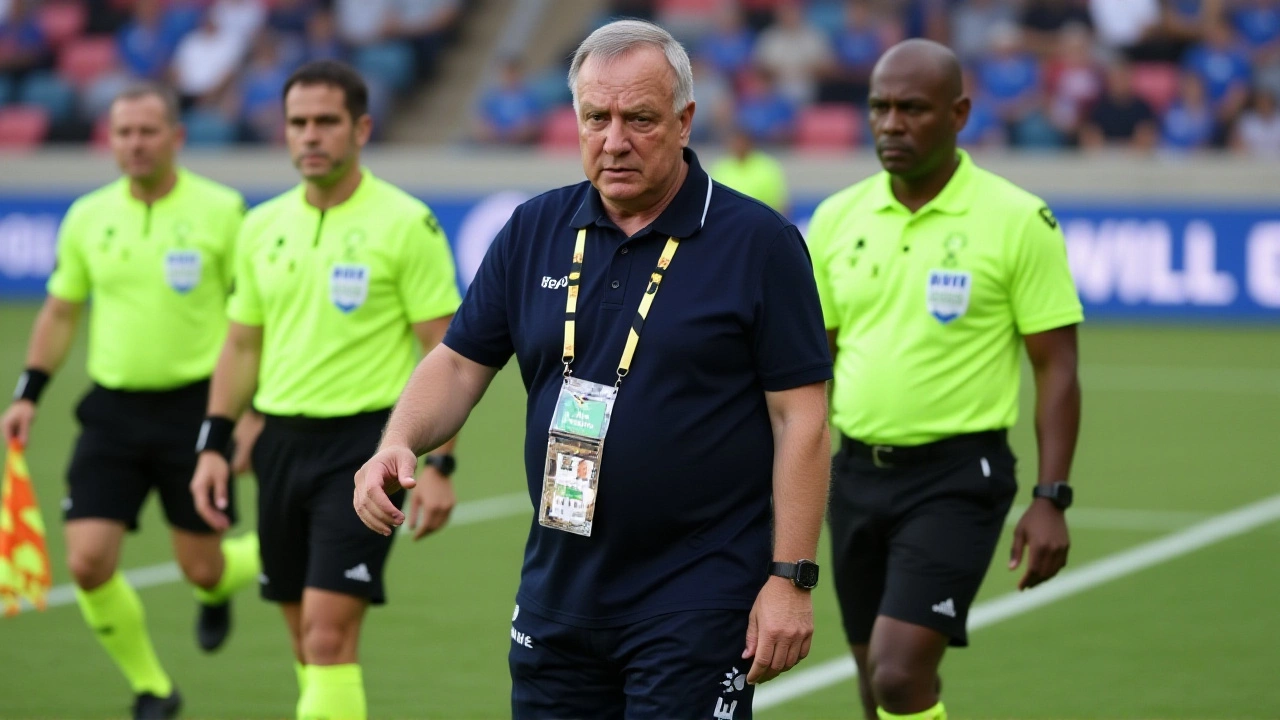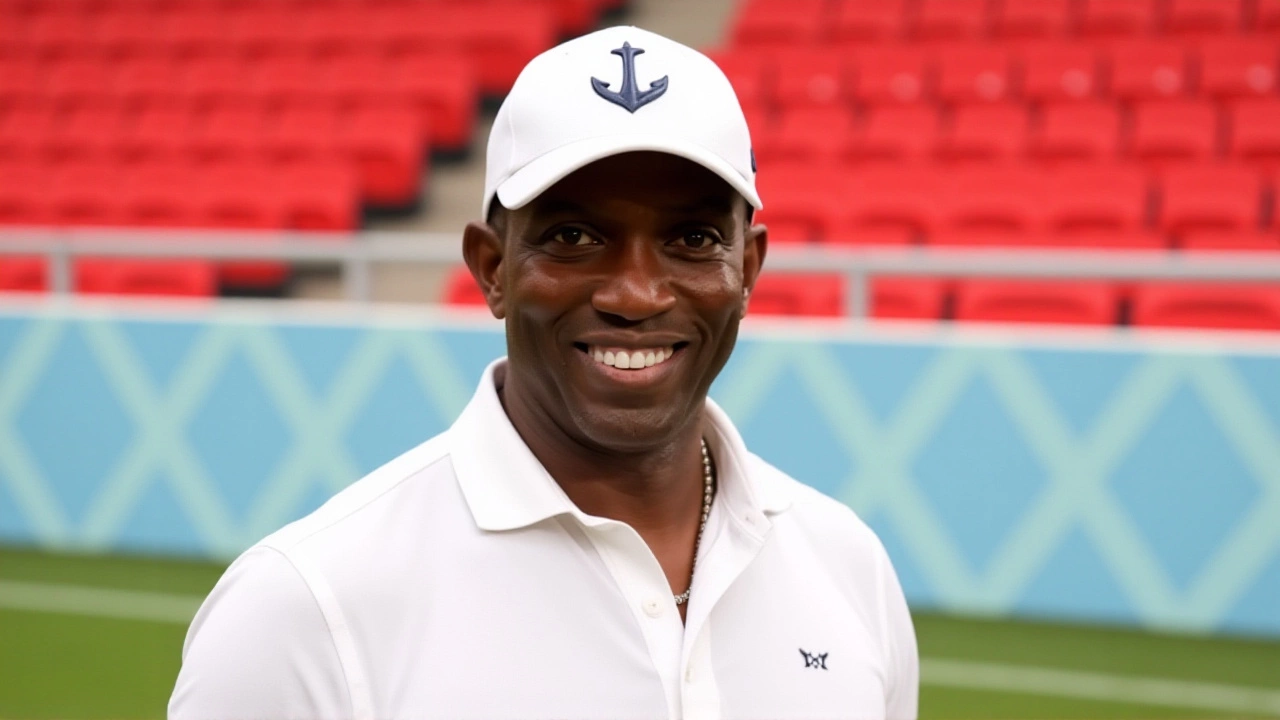Curaçao Advances to 2026 World Cup Final Round After 0-0 Draw With Jamaica

- Nov, 21 2025
- Jenson Lockhart
- 0 Comments
When the final whistle blew at Kingston’s National Stadium on November 18, 2025, Kingston, Jamaica, no goals were scored—but history was made. Curaçao secured a 0-0 draw against Jamaica in a tense 2026 FIFA World Cup CONCACAF Qualifiers Group B match, clinching their spot in the final round of qualification. The result, confirmed by CBS Sports Golazo America’s broadcast analysis the next day, sent shockwaves through Caribbean football. For Curaçao, it was more than a point—it was validation. For Jamaica, it was heartbreak wrapped in a red card.
How a Draw Became a Triumph
It wasn’t supposed to be this way. Before kickoff, CBS Sports Golazo America’s pre-match description suggested Curaçao needed a win to advance. But the math didn’t lie: a draw was enough. With three matches played, Curaçao sat on seven points—two wins and one draw—while Jamaica, despite a win and a draw earlier in the group, could only manage four points after this result. The CONCACAF qualifying structure rewards consistency, not just victories. And Curaçao, a nation of fewer than 170,000 people, had outlasted expectations.The match itself was a masterclass in defensive grit. Andre Ricardo Blake, Jamaica’s 34-year-old captain and Philadelphia Union FC goalkeeper, was the hero. At the 25th minute, Curaçao’s Okadia unleashed a thunderous shot from the edge of the box—Blake dove full-stretch, fingertips grazing the ball to push it wide. Later, at the 60th minute, a Curaçao counterattack left Jamaica’s defense exposed. Blake raced off his line, smothering the ball before it reached the striker. Two saves. Two miracles. But no goals.
The Turning Point: Russell’s Red Card
Then came the 89th minute. With Jamaica pushing forward, desperate for a winner, defender John Michael Russell—a 47-cap veteran for the Reggae Boyz—tackled Curaçao’s Loadia (identity unconfirmed) in a 50/50 challenge near the sideline. The referee, whose name remains unreported, had already given him a yellow earlier in the half. The second card came swiftly. The stadium fell silent. Russell, head down, trudged off. Jamaica, down to 10 men, had seven minutes left to score.What followed was chaos. Coach Steve McClaren, the English tactician appointed in August 2023, pulled his last substitute and sent Blake forward as an emergency striker. It was a Hail Mary. In the final seconds of stoppage time, Richards (Jamaica, full name unconfirmed) swung in a corner. Cphus—likely a misheard name for Shamar Nicholson or Levi Garcia—rose above the defense. The header crashed off the crossbar. The ball bounced out. The whistle blew.
It wasn’t just a loss. It was a collapse under pressure. Jamaica’s third red card in three qualifiers has become a pattern. And with only two matches left—including a must-win against El Salvador on March 25, 2026—their World Cup dreams are hanging by a thread.
Why Curaçao’s Qualification Matters
Curaçao’s advancement isn’t just a feel-good story—it’s structural. They reached the final round of World Cup qualifying for the second time in a row, mirroring their 2022 campaign. That’s unprecedented for a Caribbean nation of their size. Their squad blends Dutch-trained players, local stars from the Curaçao League, and a handful of European-based talents. The $1.5 million in FIFA solidarity payments they’ll receive will fund youth academies, turf upgrades, and coaching programs. For a footballing nation that once struggled to field a full squad, this is transformation.Meanwhile, Jamaica’s $500,000 loss in performance bonuses—per CONCACAF’s incentive structure—isn’t just financial. It’s symbolic. It reflects a team that’s fallen short when it mattered most. And with the next qualifiers scheduled for March and June 2026, the clock is ticking.

The Bigger Picture: CONCACAF’s New Era
This match underscored a quiet revolution in CONCACAF football. Once dominated by the U.S., Mexico, and Costa Rica, the region is now a battleground for emerging nations. Curaçao, Suriname, Guyana, and even Bermuda are closing the gap. The 2026 World Cup will feature 48 teams—11 from CONCACAF—and that means more spots for the underdogs. Curaçao’s qualification proves that depth, discipline, and smart management can overcome size and budget.And yet, the broadcast’s odd comparison to Uzbekistan, Jordan, and Cape Verde—teams from Asia and Africa—wasn’t just a slip. It revealed a lingering blind spot. These teams don’t compete in the same confederation. The commentary missed the point: Curaçao’s achievement isn’t about matching distant nations. It’s about proving that Caribbean football belongs at the table.
What’s Next?
Curaçao will face the top teams from Group A and C in the final qualifying round starting March 2026. They’ll likely draw the U.S., Canada, or Mexico. It’s daunting. But they’ve already beaten the odds once. Jamaica’s fate hinges on beating El Salvador on March 25 and then hoping for a miracle against Panama or Honduras. One loss, and their World Cup run ends.For Curaçao, it’s not about winning the World Cup. It’s about showing the world they belong in the conversation.
Frequently Asked Questions
How did Curaçao qualify with a 0-0 draw?
Curaçao entered the match with seven points from two wins and one draw. Jamaica had only four points from one win, one draw, and one loss. A draw gave Curaçao the necessary point to finish ahead of Jamaica in Group B standings, securing second place and automatic advancement to the final round. The result was mathematically confirmed after the match, despite pre-match expectations that a win was needed.
Why was Andre Blake’s performance so critical?
Blake, Jamaica’s captain and goalkeeper, made two vital saves in the 25th and 60th minutes, denying Curaçao’s best chances. His composure under pressure kept Jamaica in the game despite being outplayed for stretches. Without his saves, Curaçao likely would have won, and Jamaica’s World Cup hopes would have ended outright—not just dimmed.
What impact does the red card have on Jamaica’s chances?
John Russell’s red card was Jamaica’s third in three qualifiers, exposing a pattern of reckless tackles under pressure. With him suspended for the next match against El Salvador on March 25, 2026, Jamaica loses a key defender and leader. Their chances of winning that match—and staying alive—just dropped significantly.
How much money is at stake for Curaçao and Jamaica?
Curaçao will receive an estimated $1.5 million in FIFA solidarity payments for advancing to the final round, funding grassroots development. Jamaica, by contrast, forfeits $500,000 in CONCACAF performance bonuses tied to progression. That’s not just lost revenue—it’s lost opportunity to invest in coaching, facilities, and youth programs.
Is this Curaçao’s best chance at a World Cup?
Yes. While they’ve never qualified for a World Cup, this is their strongest squad ever—mixing Dutch academy talent, European-based players, and homegrown stars. They’ve reached the final qualifying round twice in a row, something no other Caribbean team has done. If they can hold their own against the U.S. or Canada in March 2026, they could even win their group—a scenario once unthinkable.
What’s the significance of the CBS Sports commentary comparing Curaçao to Uzbekistan and Jordan?
The comparison was misleading. Uzbekistan and Jordan are Asian Football Confederation teams; Curaçao competes in CONCACAF. The commentator likely meant to highlight underdog status, but it confused confederation structures. The real story isn’t about matching distant nations—it’s about Caribbean football finally gaining legitimacy on its own terms.
Write a comment